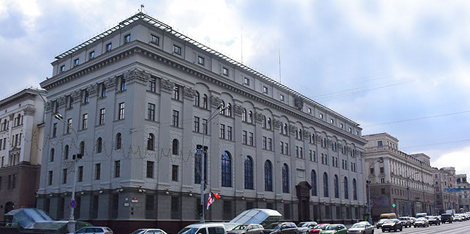Opinions & Interviews
Belarus’ central bank expects inflation below 6% in 2018

MINSK, 26 July (BelTA) – The inflation was within the forecast parameters in H1 2018 and it is projected to stay below the 6% target by the 2018 year-end. On 26 July the Board of the National Bank convened for a session to review the results of the monetary policy in H1 2018, BelTA learned from the information and public relations office of the National Bank.
In H1 2018, the goal was to maintain the macroeconomic stability, contain inflation and maintain the gold and forex reserves. The monetary and financial stability was secured in the country in H1.
The meeting participants noted that the inflation remains low. The annual growth of consumer prices in June 2018 amounted to 4.1% while the target is to keep it below 6% in December 2018 vs December 2017.
In 2019-2020 the inflation is projected below 5%. “Thus, the most important objective for the next few years is to ensure the sustainability of these results and eliminate the prerequisites for the growth of prices for individual goods and services,” the National Bank said.
To accomplish this target, the government and the National Bank are currently updating the anti-inflation program to eliminate the existing disparities in pricing and slow down the growth of administratively regulated prices and tariffs. Apart from that, measures will be taken to promote competition and tackle monopoly.
It was noted that gold and foreign currency reserves are going to be above the minimum threshold, while their structure is improving as the share of borrowing is falling. An insignificant reduction of the gold and forex reserves in H1 2018 is attributed to the scheduled settlement of forex obligations of the government and the National Bank; the funds for that were earmarked last year. International reserve assets are expected to make up $6.5 billion by the end of 2018.
In H1 2018 the financial sector demonstrated resilience to major risks. The payment system operated in a stable and uninterrupted mode.
Safe operation requirements were broadly observed by banks and the Development Bank of the Republic of Belarus. The insurance sector and the sector of other financial intermediaries demonstrated robust performance.
According to the participants of the meeting, the government and the National Bank need to team up to address the most burning issues facing the domestic economy, like a high level of dollarization and exaggerated inflation expectations.
If these issues are tackled successfully and if the interest rate channel operates more efficiently, the country will be able to make a transition in the mid-term to the monetary policy of “inflation targeting”.
Participants also considered the use of API (application programming interface) in the financial sector. According to the Belarus Digital Banking Development Strategy for 2016-2020, the introduction of API into the financial sector is crucial for the strategic development of digital banking technologies.
The main task of an open API is to create tools for data exchange between software applications during interaction between the data owner and third parties. In this interaction model, the data owner may also be able to receive data from third parties. Such cooperation gives a synergistic effect, as the data of one organization is enriched by the data of another. As a result, a more complete set of data emerges. Its analysis will expand the market of banking services for the end user.
The introduction of open APIs will offer banks' clients more opportunities and tools to obtain operational and reliable financial information, which will have a positive impact on consumer protection, financial literacy, and customer trust in the financial system. Banks will be able to increase the number of customers, reduce the costs of developing their own financial applications, and increase competition. API software developers will be provided with convenient infrastructure and a platform for developing innovative financial technologies and additional services for banks.







 print version
print version make home page
make home page add to bookmarks
add to bookmarks

